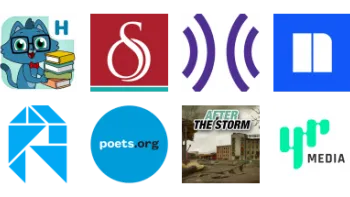Take a look inside 6 images
Whooo's Reading
Pros: Open-ended questions invite students to read critically, and sharing tools help students recommend favorite reads to their classmates.
Cons: Avatars and rewards may lack appeal for older students; auto-generated questions can be too general.
Bottom Line: With a few thoughtful tweaks on the part of teachers, this can be a useful tool for building a classroom culture of active independent reading.
Whooo's Reading has paid and free versions, so take a spin through the features and see what suits your classroom best. Also, since this is a browser-based tool that requires internet access, think about how you might expect students to log in and use the tool, especially if your students don't have reliable internet access at home.
This tool will work best in upper elementary and middle school grades; check out the developer's three-week checklist that offers step-by-step hints for integrating the tool into your classroom. You can learn more about creating custom questions and tuning quizzes to match your curriculum, like including questions on vocabulary and identifying the main idea in a text. You might also consider building in classroom time to discuss reading that students have logged for the week. It could be fun to display students' submissions to the built-in social network ("Owlstagram") or discuss their favorite recent reads. There's great potential here to help your students develop their writing skills while you build a culture of independent readers.
Whooo's Reading is a reading website designed to help students think critically about what they read. Students log whatever book they're reading and then answer open-ended questions, write reviews, and answer brief reading comprehension questions. Students can submit their responses by typing or speaking, a standout feature for students with limited typing skills and learning differences. The website has an automatic grading system that evaluates student responses for length and complexity, and teachers can also evaluate students' responses and send feedback. Students can see what other students are reading through their class shelf and get suggestions on new books to read. Students earn coins for completed activities, which they can use to customize their in-app avatar. To set things up, teachers create an account and create a class roster, after which they can set up custom open-ended questions for their students. The teacher dashboard offers basic data on student reading and responses; paid subscriptions offer more opportunities for reporting and customization. At the time of this review, there were three subscription tiers available, each with more features for reporting and customization. There's a free version, plus silver and gold options, each of which have a base price plus an added fee per classroom.
This is a solid tool for supporting reading comprehension, writing development, and student agency. While it's no substitute for teacher-guided, book-specific activities, the focus on student-selected books and written responses can be a valuable, supplemental component of an independent reading program. For younger students in particular, Whooo's Reading encourages students to read more and to thoughtfully reflect on what they read. The big selling point is that this system focuses on open-ended responses rather than multiple-choice questions, and it's a nice way to encourage students to think critically, reflect, and develop their thinking about what they read. So many other tools for reading bog things down with stale books and a battery of knowledge check questions, but Whooo's Reading intentionally avoids that.
That being said, some of the automated features can hamper a truly personalized experience. The automatically generated questions can be a bit too general, and the automatic scoring feature can sometimes reward responses that don't really show deep understanding of a book. Teachers can edit these scores, of course, but this illustrates the site's main limitation. This site works best when teachers build on its automated features by adding their own writing prompts, or better yet by inviting students to create their own, book-specific questions. This means a bit more work for the teacher, but it also might offer a clearer picture of students' reading comprehension and overall progress. Plus, kids are smart: They'll likely be more engaged if they sense that their teachers plan to review their responses rather than leaving the grading up to the robots. Overall, this is a helpful way to develop close reading and support passionate independent reading, especially if teachers tailor its features to fit their students.















